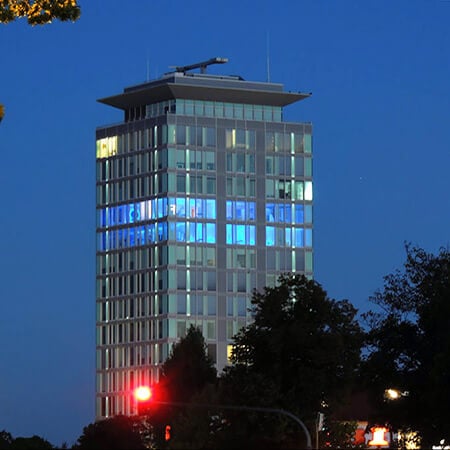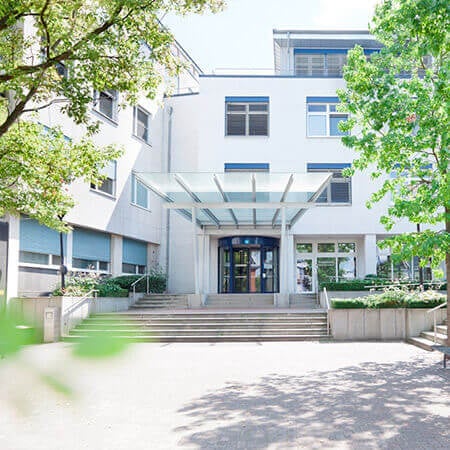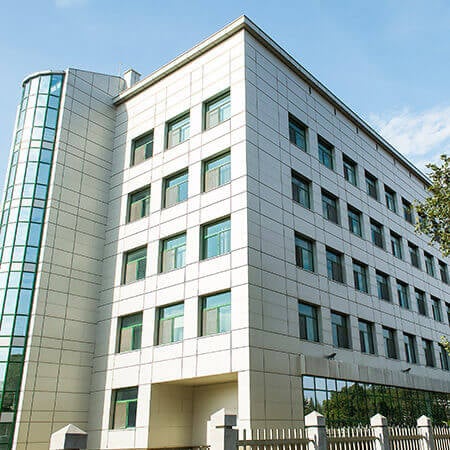Knee replacement
Knee replacement is a surgery for the implantation of an artificial joint, to replace the patient’s own. Indications for endoprosthetics are any diseases that disrupt the function of the knee joint and cause chronic pain syndrome. Rheumatoid arthritis, Bekhterev's disease, injuries, and tumors are amongst such indications. European countries are leading the field of endoprosthetics. Thus, more than 100,000 such operations are conducted in Germany each year.
The Booking Health portal presents 80 German clinics specializing in Knee replacement
Show all clinics
Diagnostics for Knee replacement
In cases of knee joint diseases, the patient visits a doctor with complaints of gait disturbance, knee pain, or joint deformity. After a clinical examination, the doctor proceeds to laboratory and instrumental diagnostics, such as:
- complete blood count, blood glucose level;
- rheumatoid factor blood level (depending on preliminary diagnosis);
- ultrasound examination;
- two-dimensional radiography;
- CT/MRI.
Imaging methods allow the doctor to accurately assess the degree of joint damage and, if necessary, decide on performing endoprosthetics.
Best clinics in Germany for the diagnostics of knee joint diseases:
Performance of Knee Replacement
The primary task of the doctor is to select the most suitable endoprosthesis. The type of prosthesis is chosen individually, based on the clinical situation, the needs and lifestyle of the patient, his financial capabilities, and the expectations from the surgery. Only hypoallergenic prostheses with a service life of more than 20 years are used in Germany.
So, depending on the type of liner, prostheses are divided into fixed and mobile ones. According to the number of joint surfaces that are replaced during the endoprosthesis of the knee joint, they can be unicondylar, bipolar, or tripolar. There is either a cement or cementless fixation of the knee endoprosthesis (cement fixation is used much more often because it is more reliable).
Different endoprosthesis provide different volumes of movement. The following types of artificial joints are used:
- Hinged. It moves only in one plane.
- Constrained. It has a limited valgus deviation. It allows the rotation of the joint in the plane of flexion.
- Semi-constrained. The anterior-posterior stabilization of the joint is performed. The posterior cruciate ligament is replaced.
- Non-constrained. The posterior cruciate ligament is retained. The device has no limiters.
Runner's knee is an orthopedic disease caused by a fatigue-related injury. This is not one-time damage, but is caused by wear and tear. Minor running knee injuries gradually damage the tendons, ligaments, muscles, and cartilage. As a result, inflammation and degenerative processes develop. Runner's knee is an orthopedic term that can include various conditions. As a result of recurrent minor running knee injuries, the following conditions develop most often:
- iliotibial band syndrome;
- chondromalacia patellae;
- patellar tendinitis.
As a rule, an outward patellar dislocation is the result of permanent running knee injuries. In addition, it is displaced by unevenly developed muscles of the lower limb.
For the treatment of runner's knee in orthopedic departments, conservative methods are more often used. Runner's knee surgery in Germany is rare. The patient needs rest, therapeutic exercises, massage, stretching, and strengthening of the individual muscle groups to return the patella to the correct position. Anti-inflammatory therapy and injections of platelet-rich plasma are carried out. To avoid recurring running knee injuries, it is worth giving up intense exertion for at least 3 weeks.
If necessary, runner's knee surgery in Germany is performed. Doctors perform different types of interventions, depending on the origin of the pain syndrome. In many cases, minimally invasive arthroscopic interventions are used for runner's knee surgery in Germany.
Surgery for Knee Replacement
During the preparation for the surgery, it is recommended to:
- Train the muscles of the arms and torso. Further strengthening of the muscles in these zones will help the patient to cope better with crutches in the postoperative period.
- Normalize weight. This will reduce the load on the knee joint prosthesis.
- Discuss with the doctor the administration of all medications. Some drugs can increase bleeding, the risk of thrombosis, or other complications.
Endoprosthetics of a knee joint is performed under general or spinal anesthesia. General anesthesia implies a deep sleep. An injection in the lumbar region is performed for spinal anesthesia, then, a complete loss of sensitivity occurs. The patient is conscious during this procedure.
Usually, endoprosthetics of a knee joint takes no more than 1-2 hours. The day after surgery, the patient can sit on a bed. He can move with crutches or a walker in 2 days. The drainage is removed in 1-2 days. The patient can walk with one crutch or a cane on the fifth day. The patient is discharged on the 5th-10th day. The stitches are removed on the 10th-14th day.
The replacement of a knee joint allows a patient to achieve many medical purposes, namely:
- to eliminate chronic pain syndrome;
- to restore limb functionality;
- to completely restore their movement amplitude and working capacity;
- to restore the normal limb axis and knee joint stability.
Best clinics for the knee replacement in Germany:


Rehabilitation after a Knee Replacement
The patient will need rehabilitation after a knee replacement. Doctors of different specialities take part in the rehabilitation process. The restoration is based on physical therapy, physiotherapy, and special training on simulators and in a pool. Massage, reflexotherapy, and other procedures are performed. The rehabilitation program is selected individually for each patient.
The patient should avoid increased loads on the endoprosthesis in order to maintain its good condition for a long time. Such kinds of sports as running and jumping, are contraindicated for patients. They can swim, ride a bicycle, walk, etc. The patient should avoid hits or any other mechanical influence on the knee joint. They are also not allowed to lift heavy objects or gain excessive body weight.
The patient should undergo annual diagnostics to assess the condition of the endoprosthesis. If there are any alarming symptoms (deformation, noise, changes in the amplitude of movements in the joint), it is better to visit a doctor as quickly as possible.
Rehabilitation programs in Germany are designed for 2 weeks. If necessary, they can last much longer. In this country, the patient is provided with qualitative care, accommodation in comfortable rooms, and individually selected meals.
Rehabilitation programs in Germany show some of the best results in the world. Most patients successfully restore their employability and excellent health there. They remain physically active, returning to their full social and family life.
Best clinics in Germany for orthopedic rehabilitation:
Author:
The article was edited by medical expert, board certified Dr. Nadezhda Ivanisova. For the treatment of the conditions referred to in the article you must consult a doctor; the information in the article is not intended for self-medication!
Sources:
Journal of Orthopaedic Surgery and Research
The cost of services includes
Here you can find the cost of treatment for this disease at the German University Hospitals. Leave a request and we will provide a free consultation with a doctor and will start organizing the whole treatment process.
The program includes the following:
- Issuing of an invitation for getting a visa for treatment as quick as possible
- Fixing an appointment at a time convenient for you
- Preliminary organization of a comprehensive examination and discussion of the forthcoming treatment plan
- Arranging transfer from the airport to the hospital and back to the airport
- Provision of interpreting services and services of a personal medical coordinator
- If necessary, assistance in the organization of further surgical treatment
- Provision of a medical insurance against treatment complications covering up to 200,000 euro
- Preparation and translation of medical records and recommendations from the hospital
- Assistance in the subsequent communication with your attending physician, including consultations on repeated X-ray images through the unique medical document management system E-doc



